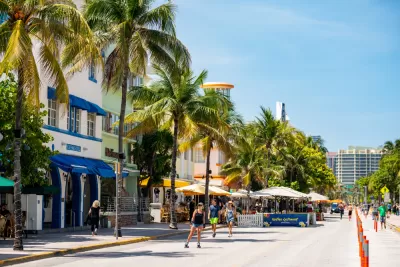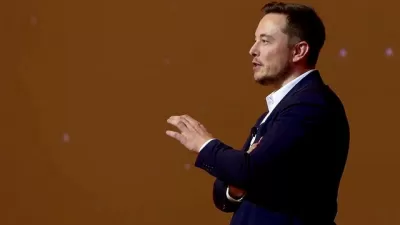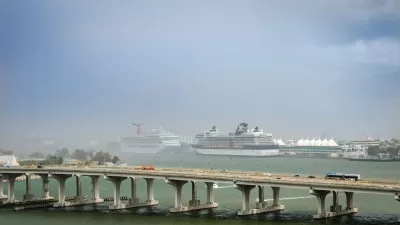Mayor Francis Suarez thinks the tunnel could alleviate congestion, but critics argue the city's rising water table makes tunneling too expensive and impractical.

Despite the city's reputation as a "sinkhole capital," Miami Mayor Francis Suarez plans to "seek federal funding for an Elon Musk-built underground car tunnel to curb traffic," reports Denise Pellegrini in Bloomberg Quint. Ignoring longstanding concerns about the high water table in the area, "Suarez has become the chief local advocate" for the tunnel and hopes that the federal government will "involve itself" in the project. Although the roads are controlled by the county rather than the city, the mayor hopes his enthusiasm will lead to more momentum for the tunnel.
"After meeting with executives from Boring, who are already building a tunnel for self-driving Teslas in Las Vegas, Suarez said he is thinking about a similar transportation system that could potentially connect Brickell to downtown, Grand Central Station, Miami World Center, the Omni area, Wynwood, and Little Haiti." Anticipating a funding shortfall, "Suarez is also already pursuing a company-funded model for the project," writes Pellegrini. "Suarez thinks Musk may agree to build a user-fee based tunnel system in Miami, and says such systems could become widely popular across the country." While the mayor points to a "Boring project in Chicago [that] is set up under a similar concept," that project has been almost certainly scrapped.
FULL STORY: Miami Mayor to Seek Federal Funding for Proposed Elon Musk Tunnel

Planetizen Federal Action Tracker
A weekly monitor of how Trump’s orders and actions are impacting planners and planning in America.

Maui's Vacation Rental Debate Turns Ugly
Verbal attacks, misinformation campaigns and fistfights plague a high-stakes debate to convert thousands of vacation rentals into long-term housing.

San Francisco Suspends Traffic Calming Amidst Record Deaths
Citing “a challenging fiscal landscape,” the city will cease the program on the heels of 42 traffic deaths, including 24 pedestrians.

Defunct Pittsburgh Power Plant to Become Residential Tower
A decommissioned steam heat plant will be redeveloped into almost 100 affordable housing units.

Trump Prompts Restructuring of Transportation Research Board in “Unprecedented Overreach”
The TRB has eliminated more than half of its committees including those focused on climate, equity, and cities.

Amtrak Rolls Out New Orleans to Alabama “Mardi Gras” Train
The new service will operate morning and evening departures between Mobile and New Orleans.
Urban Design for Planners 1: Software Tools
This six-course series explores essential urban design concepts using open source software and equips planners with the tools they need to participate fully in the urban design process.
Planning for Universal Design
Learn the tools for implementing Universal Design in planning regulations.
Heyer Gruel & Associates PA
JM Goldson LLC
Custer County Colorado
City of Camden Redevelopment Agency
City of Astoria
Transportation Research & Education Center (TREC) at Portland State University
Jefferson Parish Government
Camden Redevelopment Agency
City of Claremont




























